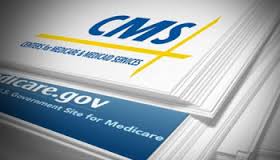For the third year now The Centers for Medicare and Medicaid Services (CMS) released its updated Physician and Other Supplier Utilization and Payment public use data, which includes summarized information on Part B services and procedures provided to Medicare beneficiaries. CMS’ eventual goal is to shift Medicare payments from volume to value, tying 30 percent of traditional Medicare payments to alternative payment models and tying 85 percent of all traditional Medicare payments to quality or value by the end of 2016.
Interestingly, many who had covered the first two data releases did not cover the most recent, third, data release in such detail (if at all). Some believe the lack of coverage is due to the fact that data releases from CMS have become frequent and routine, not to mention groups like ProPublica utilizing the data for consumers to use regularly, reducing public reliance on the actual Medicare data.
Even CMS didn’t heavily publicize the release, only publishing a press release, announcing that the 2014 updated dataset contains information for just under 1 million providers (986,000), up from 950,000 providers in 2013. Niall Brennan, chief data officer at CMS, believes that “the release of timely, privacy-protected data is especially important as the Medicare increasingly pays providers based on the quality, rather than the quantity, of care they give patients.”
Charles Ornstein of Propublica jointly publishing on National Public Radio (NPR) spoke with Niall Brennan around the same time as the data release. Brennan stated during the interview that the data releases by CMS have been gradual: they “started with relatively small and modest data releases – things like releasing data at the regional level on differences in Medicare spending among states and counties.” From there, CMS moved to releasing information on “discharges at hospitals; how physicians practice medicine in the Medicare program; how they prescribe drugs in the Medicare program; how they prescribe durable medical equipment such as wheelchairs.”
CMS continued on their path to openness and transparency, releasing Sunshine Act Open Payments data and giving consumers information to choose their health plan through the Affordable Care Act marketplace and Medicare Advantage.
When asked if he thought the data sets would continue to be released each year, Brennan responded, “I do. We’re creating a good track record of consistency around releases. Unless something drastically changes in terms of agency priorities, I think people should expect to see these data releases on a regular basis for some time to come.”
He was also asked why the delay in releasing the data – for example, the most recent release was a release of 2014 data. He stated that one of the reasons is that “it takes quite a lot of internal CMS time and resources to crunch through the data and make it ready for publication.” He stated that CMS tries to make the data as accurate as possible so that people are not led to wrong inferences or conclusions.
He also mentioned the lag time in the bills submitted by providers to Medicare. He claimed that it can take up to nine months for the very final bills to be adjudicated and finally settled.
Ornstein asked one of the questions on everyone’s lips: how should people use the data? Brennan stated that he hopes “that consumers will use the data to understand more about their doctors” and that he seemed to endorse the fact that “there are a lot of data innovators and data entrepreneurs and researchers and journalists using this data to understand more about the health care system, ask important questions about physician practice patterns.”
When asked about data sets to be released over the rest of the year, Brennan somewhat demurred, stating “I hesitate to try and forecast too far in the future what we’re going to release because our priorities are changing all the time” and that they are “releasing so much data now that the annual re-release cycle is consuming more and more of our time.” He is, naturally, hoping to continue making “inroads” on the number of Medicare provider releases for fee-for-service spending.

